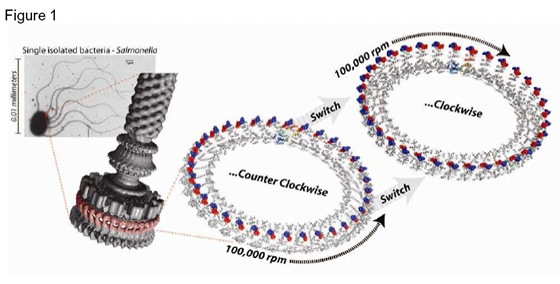Aug 1 2010
Scientists from the Victor Chang Cardiac Research Institute (VCCRI), Sydney, have discovered the secrets behind the tiny motors in bacteria that allow them to swim rapidly towards nutrients and away from toxins, which is crucial to the spread of bacterial infection. These motors can rotate at up to 100,000 revolutions per minute, yet can switch directions in milliseconds.
Responsible for many of our most serious diseases, including bacterial endocarditis that destroys heart valves, and rheumatic fever that causes inflammation of heart muscle, bacteria use their propellers to move through bodily fluids to attack their target tissues.
Discovering the mechanisms that regulate their movements could have significant implications for the treatment of these potentially life-threatening diseases, by allowing the design of new anti-bacterial drugs to combat the spread of infection.
Professor Bob Graham, Executive Director at the VCCRI, says researchers around the world have been trying to understand these remarkable biological motors and how they are driven, since they were first discovered in the 1970's.
"The miniscule flagellar motor is the most efficient rotary motor known to man, converting 99 per cent of its fuel energy into rotational power. By comparison, internal combustion engines, including those that drive Formula 1 racing cars, have a maximum efficiency of only 37 per cent.
"Many infectious bacteria, such as E. coli, Salmonella, Staphylococcus and Streptococcus use these propellers to swim towards their target. We now understand how they do this, which should allow more effective, rational design of drugs to combat these bacteria," continued Professor Graham.
Using a sophisticated method known as X-ray crystallography, the researchers pieced together a precise 3D image of the positions of more than 200,000 atoms. These atoms form a stunning structure, responsible for generating rotation in the motor. This allowed them to discover how the motor can switch to a 'reverse' gear almost instantaneously. (Figure 1)
 |
| Researchers at the VCCRI have shown how the tiny motors in bacteria propel them rapidly through bodily fluids to attack their target tissue. The flagellar motors move counter-clockwise for forward motion, and can switch instantaneously into 'reverse' gear by turning clockwise, at up to 100,000 revolutions per minute. |
"This work really unifies the results of decades of international scientific study, and is a coup for Australian science. The fact we can now understand how these bacteria generate movement and change direction is of critical importance, not only for biologists around the world, but for the future design of nano-machines as well," added Professor Graham.
The research is published today in the latest online edition of the prestigious scientific journal, Nature.
About the Victor Chang Cardiac Research Institute
Established in 1994, the Victor Chang Cardiac Research Institute (VCCRI) is committed to excellence into heart disease and cardiovascular biology, cardiovascular research training and facilitating the rapid application of research discoveries to patient care. In Australia alone, heart muscle diseases - the cause of heart failure - are responsible for the death of over 130,000 people annually with 400 new cases being added each week. For more information visit www.victorchang.edu.au